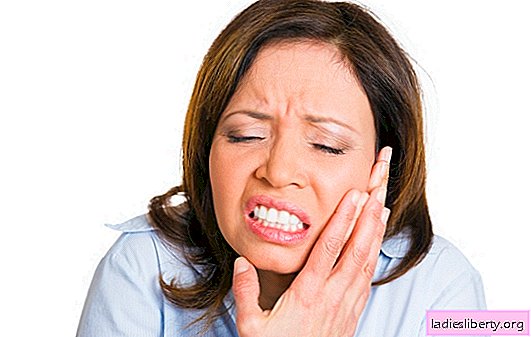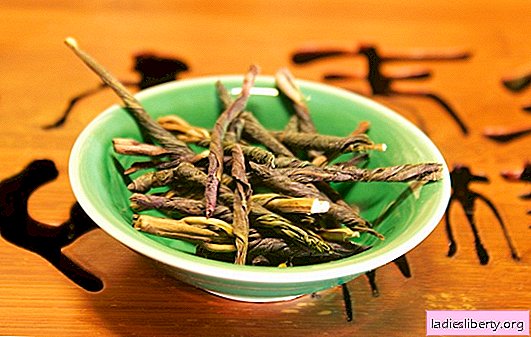
The facial (trigeminal) nerve is one of the twelve cranial nerves, which is responsible for the motor, sensitive and facial functions of the face.
Consider the main symptoms of facial inflammation and treatment methods for this condition.
Causes of facial inflammation
Most often, the facial nerve becomes inflamed for the following reasons:
1. Strong hypothermia or stay in a draft.
2. Meningitis.
3. Multiple sclerosis.
4. Constant compression of the nerve with vessels or a developing tumor.
5. Herpes, which will affect the end of the nerve.
6. Wrong bite.
7. Chronic diseases of the sinuses of the nose.
8. Aneurysm.
9. Injury to the face.
10. Concussion.
11. Viral infections.
12. Various bacterial infections of the upper respiratory tract.
13. Anesthesia of the lower alveolar nerve by the dentist.
14. A sharp decrease in immunity.
15. Strong psycho-emotional shock.
16. Poor nutrition, which leads to immune disorders.
17. Excessive physical overload.
In addition, such reasons can provoke a sudden inflammation of the facial nerve:
• shaving;
• teeth cleaning;
• a sharp touch to the face;
• a blow to the nose;
• stay in a draft, in which the wind blows in the face;
• smile.
Inflammation of the facial nerve: symptoms and signs
As a rule, inflammation of the facial nerve is one-sided, that is, only half of the face is affected. In only two 2% of all cases, inflammation of both its branches can occur.
Typically, this condition is accompanied by the following symptoms:
1. Decrease or vice versa, increased sensitivity of the affected half of the face.
2. Deterioration of ocular function (inability to look away).
3. Dry eyes or profuse lacrimation.
4. Stretching the face.
5. The appearance of curvature of the lips.
6. Decreased salivation.
7. Misalignment of some areas of the face.
8. The appearance of severe shooting pain.
9. Lowering the corners of the eyes.
10. Hearing impairment (there may be deafness or hearing impairment).
11. Deterioration of taste.
12. The appearance of twitching of the muscles of the face, which are produced inadvertently.
13. Chills.
14. Extreme fatigue.
15. The temperature rises.
16. A sharp paralysis of the muscles of the face.
17. The appearance of a small rash in the affected part of the face.
18. Pain in the muscles and body.
19. Migraine.
20. Insomnia.
21. Irritability.
It is important to know, that the above symptoms may indicate not only facial neuralgia, but also a number of other diseases of the neck, nose and face. For this reason, they must be correctly recognized and differentiated.
Pain syndrome in this condition is usually divided into two types: typical and atypical pain.
Typical pain is inherent in the acute course of this disease. In this case, the nature of such pain will be shooting and sharp. It resembles an electric shock on certain areas of the face.
Atypical pain is constant. It is localized in most of the face and has a wave-like course (it is exacerbated, then subsides again). Sometimes it happens that the pain torments a person hourly with bouts of 20 seconds. In this case, the patient can not sleep.
Inflammation of the facial nerve: diagnosis and treatment methods
Due to the fact that inflammation of the facial nerve is usually accompanied by pronounced symptoms, it will not be difficult to make this diagnosis to a doctor.
To exclude the possibility of another disease, the patient is still recommended to have a CT scan, an MRI scan and an examination by a neurologist.
Drug treatment is selected for each patient individually, depending on the complexity of the disease. Traditional therapy includes:
1. The appointment of glucocorticosteroids and hormones (prednisone).
2. Prescription of various oral anti-inflammatory drugs (Nimesulide).
3. Drugs to reduce edema and diuretics (Fursemide).
4. If the patient is in severe pain, then analgesics are prescribed (Analgin).
5. For cramping and muscle tremors, antispasmodics (drotaverinum) are used.
6. Vasodilator drugs are used to improve overall blood circulation.
7. B vitamins are used to improve metabolism and strengthen immunity.
8. With a severe violation of the motor functions of the muscles, the patient should be prescribed metabolic drugs (Nerobol).
9. Antiviral drugs are prescribed when the inflammation was caused by the herpes virus or other viral diseases. Typically, in this case, the drugs Geprevir, Lavomax are used.
10. With severe pain, a person may be prescribed narcotic painkillers (Promedol, Tramadol). Non-narcotic analgesics for intramuscular administration can also be used (Ketanov, Dexalgin).
11. Vitamin complexes are needed for the overall strengthening of the body. Typically, such medications are prescribed for this purpose: Neurobion, Neurorubin.
12. Drugs that relieve spasm.
After a medical course of treatment, when the acute symptoms are eliminated, the patient is prescribed physiotherapeutic treatment. It provides for the following:
1. Appointment of procedures with ultrasound and hydrocortisone.
2. Performing applications with ozokerite (the course of treatment involves at least 5 procedures).
3. Acupuncture.
4. Paraffin therapy.
Separately, it is worth mentioning the massage. Its main task is to relieve muscle tension from affected muscle groups and increase tone in those muscle joints that have atrophied.
In addition, with regular massage, a person will improve blood circulation and relieve inflammation. This procedure will also help get rid of severe pain.
The massage itself is done by acting on the reflex zones in the face, neck and ears. The procedure is carried out in the seated position of the patient. At the same time, his head should be laid on the headrest so that the muscles of the person’s face are relaxed.
Massage should be done with light, but at the same time fairly rhythmic movements. The specialist needs to perform it, since the patient alone will not be able to cope with it (he will not feel half of his face).
The massage technique is as follows:
• first, the muscles are warmed up with light circular motions;
• further, with stroking movements, it is necessary to go to the parotid zone;
• the duration of the procedure should be fifteen minutes;
• The course of treatment includes 10 sessions that can be repeated after two weeks.
If, after medical and physiotherapeutic treatment, the affected muscles of the face do not recover, then the patient will be prescribed surgical treatment, namely, trigeminal autotransplantation. This is an extreme measure, which is done only in especially severe cases.
Inflammation of the facial nerve: treatment, prognosis and prevention
In most cases, the prognosis for inflammation of the facial nerve is favorable. A positive outcome and complete recovery is observed in almost 80% of patients. The main thing is to see a doctor in time and start treatment so as not to worsen your condition.
If paralysis of the facial muscles lasts longer than three months, then the chances of a person's full recovery will begin to decline.
If neuritis was triggered by a trauma to the face or severe infections, then normalization of muscle functions may not occur at all. In this case, the person will need surgical treatment and a long rehabilitation period.
As for the risk of recurrence of the disease, then it is. Moreover, each new outbreak of nerve inflammation will last longer and more difficult.
As you know, the best method of treating diseases is to prevent them, therefore, in order to prevent the development of inflammation of the facial nerve, you should adhere to such tips:
1. In time to treat infectious and bacteriological diseases that can trigger inflammation of the facial nerve.
2. Monitor the condition of the teeth and, if necessary, visit the dentist.
3. To be tempered.
4. Avoid hypothermia.
5. At the first sign of illness, consult a doctor immediately.
6. Avoid stress and severe nervous shocks.
7. Stop smoking, as this lowers immunity.
8. Go in for sports and active physical activity.
9. Eat more fruits and vegetables.
10. Limit alcohol consumption.
11. Avoid injuries and drafts.











